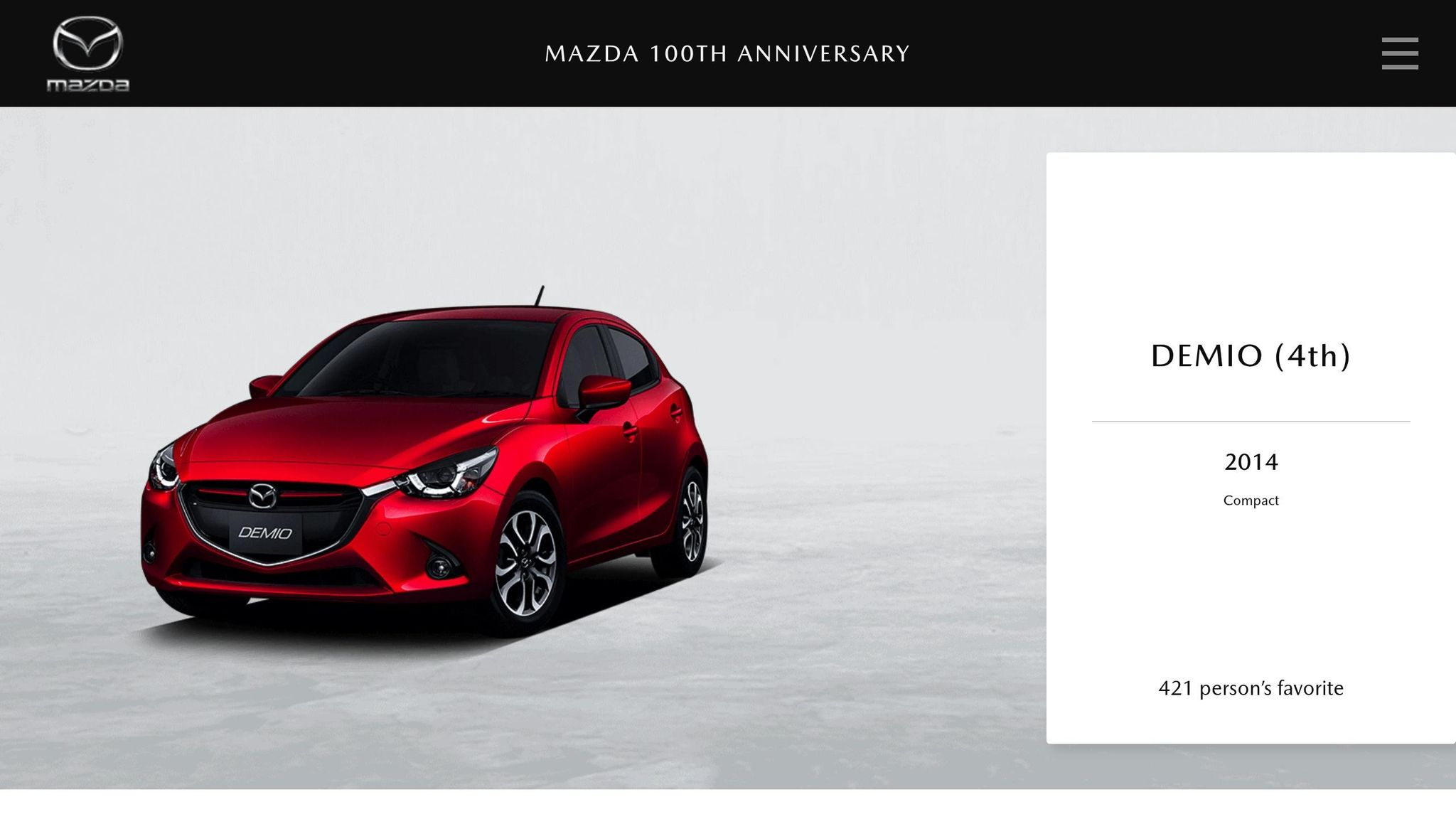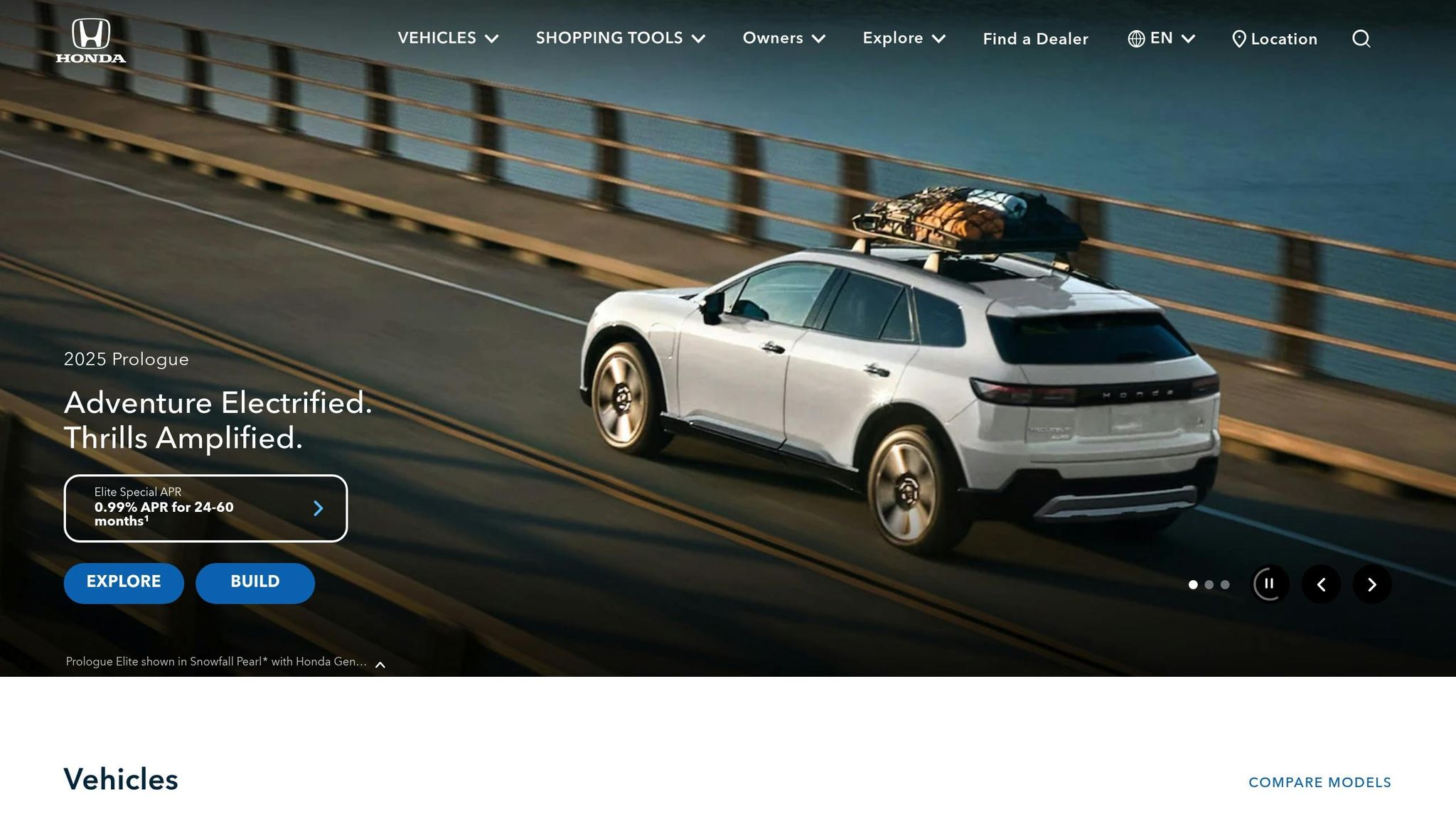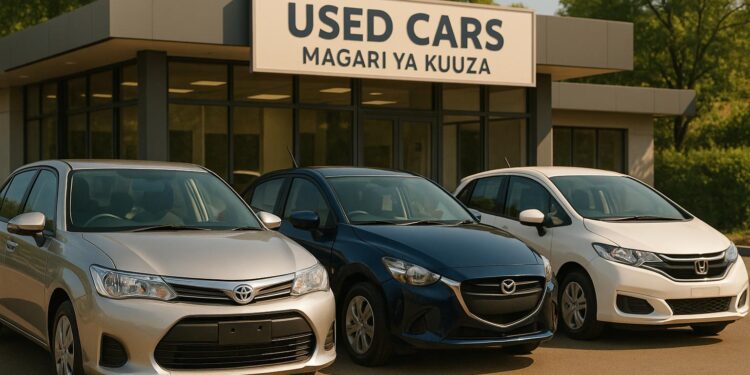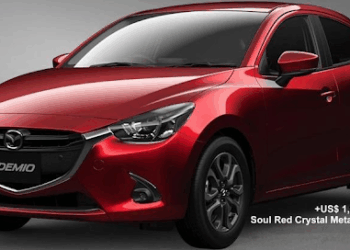If you’re in Kenya with a budget of KES 1,000,000, you can find reliable, fuel-efficient used cars like the Toyota Vitz, Mazda Demio, and Honda Fit. These models are popular for their affordability, low maintenance costs, and strong resale value. Here’s a quick breakdown:
- Toyota Vitz: Affordable and fuel-efficient (22–30 km/L). Models from 2013–2014 fit well within the budget with prices ranging from KES 500,000 to 900,000.
- Mazda Demio: Balanced performance and economy (20 km/L). Models from 2014–2016 cost KES 950,000 to 1,500,000, offering modern features.
- Honda Fit: Spacious and reliable (18–20 km/L). 2010–2014 models are priced at KES 650,000 to 900,000, with hybrid options costing more.
Quick Comparison
| Feature | Toyota Vitz | Mazda Demio | Honda Fit |
|---|---|---|---|
| Price (KES) | 500,000–900,000 | 950,000–1,500,000 | 650,000–900,000 |
| Fuel Economy | 22–30 km/L | 20 km/L | 18–20 km/L |
| Maintenance | Low | Moderate | Moderate |
| Resale Value | Excellent | Good | Very Good |
Each car has strengths: the Vitz is budget-friendly, the Demio offers balance, and the Fit provides more space. Pick the one that matches your needs, whether it’s daily commutes, family use, or fuel savings.
Top 5 Foreign Used Cars to Buy In Kenya Under 1 Million #carnversations #carsunder1million
1. Toyota Vitz
The Toyota Vitz is a solid pick if you’re working with a budget of around KES 1,000,000. Known for its reliability and affordability, this subcompact hatchback is a favorite among Kenyan car buyers, especially for daily use.
Price (KES/USD)
For a budget of KES 1,000,000, you can explore a range of Toyota Vitz models. 2008-2014 models are often priced between KES 500,000 and KES 900,000, while newer 2015-2020 models range from KES 750,000 to KES 1,300,000.
| Model Year | Price Range (KES) | USD Equivalent* |
|---|---|---|
| 2007 | 565,000 | $4,200 |
| 2011 | 699,000 | $5,200 |
| 2013 | 870,000 – 880,000 | $6,500 – $6,600 |
| 2014 | 890,000 | $6,650 |
*Exchange rates apply as of now.
Within this budget, a 2013-2014 model is a great option. It balances modern features with affordability, making it a practical choice for most buyers. Additionally, some dealerships in Kenya offer "Lipa Pole Pole" payment plans, which allow buyers to pay in installments – ideal for those seeking more flexibility.
Fuel Efficiency (mpg)
The Toyota Vitz is known for its excellent fuel economy, making it an economical choice for daily commuting. Data collected from 54 Vitz models highlights its efficiency, with many achieving over 30 mpg.
- 1.0L engine: Consumes about 5 liters per 100 km in city driving.
- 1.3L engine: Uses around 6 liters per 100 km and performs better on highways.
For those familiar with mpg ratings, older models like the 2006 Vitz deliver 30.2 mpg, while the 2005 model reaches 30.6 mpg. These figures make the Vitz a wallet-friendly option for fuel-conscious drivers.
Maintenance Costs
One of the key advantages of the Toyota Vitz is its low maintenance costs and the availability of spare parts across Kenya. Routine servicing is affordable, typically costing between KES 5,000 and KES 8,000 per visit.
| Service Type | Cost Range (KES) | USD Equivalent |
|---|---|---|
| Oil Change | 3,000 – 6,000 | $22 – $45 |
| Brake Pads | 5,000 – 10,000 | $37 – $75 |
| Full Service | 15,000 – 25,000 | $112 – $187 |
Toyota spare parts are not only widely available but also cost less compared to brands like Suzuki or Nissan. However, to avoid potential issues, it’s always best to stick with genuine Toyota parts and use certified garages for servicing.
Resale Value
The Toyota Vitz holds its value well, thanks to its reputation for reliability and low running costs. Its strong resale value makes it a smart financial decision, particularly for buyers planning to upgrade in the future.
With prices ranging from KES 500,000 to KES 1,450,000 across various model years, the Vitz remains accessible to a broad range of buyers while offering great long-term value. Its combination of affordability, efficiency, and reliability fits perfectly with Kenya’s growing consumer base and economic trends. Up next, we’ll take a closer look at the Mazda Demio, another option within the same price range.
2. Mazda Demio

The Mazda Demio delivers reliable performance and excellent fuel economy, all within a budget of KES 1,000,000. This compact hatchback is a favorite among drivers for its affordability and strong resale value, making it a practical choice for daily commutes and long-term ownership. Let’s break down its pricing, fuel efficiency, and maintenance costs to see why the Demio stands out.
Price (KES/USD)
If you’re working with a KES 1,000,000 budget, you’ll find several Mazda Demio models that fit the bill. Pre-2010 models are available for KES 300,000 to KES 700,000, while 2015-2018 models typically range from KES 950,000 to KES 1,500,000.
| Model Year Range | Price Range (KES) | USD Equivalent* |
|---|---|---|
| Pre-2010 | 300,000 – 700,000 | $2,240 – $5,225 |
| 2014-2019 | 750,000 – 2,600,000 | $5,600 – $19,400 |
| 2015-2018 (average) | 950,000 – 1,500,000 | $7,090 – $11,200 |
*Exchange rates are current as of now.
For those seeking modern features and lower mileage, pre-owned models from 2014-2016 often fall within or just above this budget range, offering a great balance of affordability and quality.
Fuel Efficiency (mpg)
The Mazda Demio is a standout when it comes to fuel economy. It consumes just 4.9 liters per 100 km, making it more efficient than many competitors.
- 2003 model: 31.5 mpg
- 2007 model: 30.6 mpg
- 2019 Mazda 2 (Demio): 34 mpg combined (30 mpg city, 39 mpg highway)
With a 44-liter fuel tank, the Demio offers an impressive range, making it a great choice for both city commutes and longer road trips across Kenya.
Maintenance Costs
Keeping a Mazda Demio in good shape doesn’t break the bank. Maintenance costs typically range from KES 5,000 to KES 30,000. Here’s a snapshot of common services:
| Service Type | Frequency | Cost (KES) | USD Equivalent |
|---|---|---|---|
| Engine Oil Change | Every 5,000-10,000 km | 5,800 – 6,500 | $43 – $49 |
| Tire Rotation | Every 8,000-10,000 km | 1,500 | $11 |
| Brake Check | Every 10,000-15,000 km | 1,500 | $11 |
| Filter Replacement | Every 15,000-30,000 km | 2,000 | $15 |
| Transmission Fluid | Every 40,000-60,000 km | 5,500 | $41 |
Spare parts for the Demio are easy to source and reasonably priced in Kenya. By sticking to the manufacturer’s recommended service schedule and working with qualified Mazda technicians, you can keep maintenance costs low and the car running smoothly.
Resale Value
The Mazda Demio holds its value well, thanks to its reputation for reliability and fuel efficiency. This makes it a top choice in Kenya’s ride-hailing market, where low operating costs are key to profitability.
With prices ranging from KES 300,000 for older models to KES 1,500,000 for newer ones, the Demio demonstrates strong resale performance across all model years. Its combination of low running costs and solid resale value makes it a smart investment, especially for buyers who may want to upgrade later without suffering major depreciation losses.
sbb-itb-e5ed0ed
3. Honda Fit

The Honda Fit stands out in Kenya’s used car market as a top-tier choice. It combines a roomy interior, impressive fuel efficiency, and a reputation for reliability – all within a KES 1,000,000 budget.
Price (KES/USD)
Used Honda Fit models tend to fetch higher prices due to their solid build and added features. If you’re working with a budget of KES 1,000,000, the 2010–2014 models strike a great balance between modern features and affordability.
| Model Year Range | Price Range (KES) | USD Equivalent* |
|---|---|---|
| 2010–2014 | 650,000 – 900,000 | $4,850 – $6,720 |
| General Range | 650,000 – 950,000 | $4,850 – $7,090 |
| 2016–2018 Hybrid | 1,200,000 – 1,600,000 | $8,960 – $11,940 |
*Exchange rates are current as of now.
For most buyers, the 2010–2014 models are the sweet spot within the budget. However, for those willing to stretch their finances, the 2016–2018 hybrid versions offer advanced features and even better fuel efficiency.
Fuel Efficiency
The Honda Fit shines when it comes to fuel economy, delivering about 18–20 km/L (roughly 42–47 mpg) in practical use. Under ideal conditions, you might even see figures as high as 22–25 km/L (around 52–59 mpg). This level of efficiency surpasses competitors like the Nissan Tiida, Mazda Demio, and Toyota Vitz, while also providing more interior space.
Maintenance Costs
One of the Honda Fit’s standout features is its low maintenance cost. On average, annual repairs cost about $390 (approximately KES 52,300), which is lower than the typical expenses for other subcompact cars.
"The Honda Fit has above average reliability scores from RepairPal, making it one of the most reliable cars in its segment."
RepairPal gives the Honda Fit a reliability score of 4.5 out of 5, ranking it 4th among 21 vehicles in its class. J.D. Power also rated the 2020 model with a dependability score of 80 out of 100.
Resale Value
The Honda Fit holds its value exceptionally well, depreciating just 28% over five years. This makes it a smart choice for those considering resale or trade-in options down the line. Up next, we’ll weigh the pros and cons of these models to help you make the most informed decision.
Comparison: Advantages and Drawbacks
Now that we’ve examined each model in detail, let’s compare how these three popular cars measure up. Each offers its own set of strengths, but there are also trade-offs to keep in mind before making your decision.
| Feature | Toyota Vitz | Mazda Demio | Honda Fit |
|---|---|---|---|
| Price Range (KES) | 400,000 – 800,000 | 500,000 – 850,000 | 650,000 – 900,000 |
| Fuel Economy | 22 km/L (1.0L) / 28–30 km/L (Hybrid) | 20 km/L (1.5L Auto) | 18–20 km/L |
| Annual Maintenance | KES 15,000 – 25,000 | Moderate | Higher |
| Resale Value | Excellent | Good | Very Good |
This table highlights the key features of each model, helping you weigh the pros and cons alongside the detailed reviews provided earlier.
Toyota Vitz: The Budget Champion
The Toyota Vitz stands out for its affordability and impressive fuel efficiency – 22 km/L for the 1.0L engine and 28–30 km/L for hybrid models. However, it compromises on interior space and power, which might affect highway driving and long trips with rear passengers. Servicing is budget-friendly, costing between KES 5,000 and 8,000, with spare parts widely available.
Mazda Demio: The Balanced Choice
The Mazda Demio offers a well-rounded mix of performance and fuel efficiency, delivering about 20 km/L. Its interior feels more refined compared to the Vitz, and it’s known for being reliable with reasonable servicing costs. However, it falls short in spare parts availability, which isn’t as extensive as Toyota’s network.
Honda Fit: The Premium Option
The Honda Fit is ideal for those seeking a roomier interior and a more premium build – great for families. That said, this comes with higher upfront costs and maintenance expenses. Its fuel economy, at 18–20 km/L, also lags behind the Vitz and the Demio.
Market Reality Check
Looking at the bigger picture, Japanese cars continue to dominate Kenya’s automotive market, making up about 78% of all imported vehicles as of December 2023. This dominance is driven by lower costs, solid reliability, and favorable import duties. Toyota models, in particular, tend to retain their value better than most, as vehicles generally lose 60–70% of their original value by the fifth year.
Hybrid cars are also gaining traction, holding their value well as fuel prices stay high. For instance, a Toyota Vitz Hybrid could save you up to 40% on fuel costs compared to conventional engines, making it a compelling choice if it fits your budget.
Ultimately, your decision will hinge on what matters most to you. If saving money is your top priority, the Vitz is hard to beat. For a mix of performance and style, the Demio strikes a good balance. And if you’re after premium features and long-term reliability, the Honda Fit might be worth the extra investment.
Final Recommendations
Based on the detailed reviews above, here are some tailored options to help you make the most of your KES 1,000,000 budget.
Choosing the right car boils down to your specific needs and driving habits. Below are some recommendations to suit various scenarios within your budget.
For City Commuting: The Suzuki Alto stands out for urban driving, thanks to its impressive fuel efficiency of 22–28 km/L. Its compact size makes parking and maneuvering in tight spaces a breeze, which is why it’s a favorite among online taxi drivers in Kenya. With prices ranging from KES 500,000 to 650,000, it leaves enough room in your budget for other expenses like maintenance and registration. If your priorities differ, check out the other options below.
For Family Transport: For family use, the Honda Fit offers a spacious cabin, while the Toyota Ractis provides added flexibility with flat-folding seats for extra cargo space. Both vehicles are known for their practicality and reliability.
For Rough Roads: If you frequently drive on rural or unpaved roads, the Toyota Passo is a solid choice, offering higher ground clearance and a price range of KES 480,000 to 850,000. Alternatively, the Toyota Probox, priced between KES 700,000 and 990,000, is built to endure tough conditions and boasts an impressive 8-sack cargo capacity.
Beyond these recommendations, here are some tips to protect your investment and ensure a smooth buying experience.
Smart Buying Tips
- Always have a professional mechanic inspect the car before purchase to avoid unforeseen repair costs.
- Verify the logbook and service history to confirm the vehicle’s reliability.
- Explore direct imports from Japan for potentially better deals. This is a popular option, as 87% of Kenyan car buyers prefer used vehicles over new ones. Keep in mind that new cars lose about 30% of their value within the first year, making used cars a more budget-friendly option.
"I bought my 2012 Vitz for KSh 850k in 2021 – it’s still running perfectly with just routine maintenance." – James M., Nairobi
FAQs
What should I consider when deciding between the Toyota Vitz, Mazda Demio, and Honda Fit for under KES 1,000,000?
When deciding between the Toyota Vitz, Mazda Demio, and Honda Fit within a budget of KES 1,000,000, it’s important to weigh factors like reliability, fuel efficiency, and resale value.
The Toyota Vitz is a solid choice, offering dependable performance and affordability, making it a versatile option for many buyers. The Honda Fit, on the other hand, shines with its roomy interior and impressive fuel economy, making it a smart pick for families or those who drive frequently. If you’re looking for a mix of practicality and style, the Mazda Demio delivers with its sleek design and fuel efficiency.
Beyond these basics, take the time to assess the car’s condition, maintenance history, and how well it aligns with your specific needs – whether that’s daily city driving, family outings, or the occasional off-road adventure. These details can make all the difference in ensuring your purchase is both satisfying and a good value over time.
What are the maintenance costs and spare parts availability for the Toyota Vitz, Mazda Demio, and Honda Fit in Kenya?
The Toyota Vitz stands out for its affordable upkeep, with minor services typically costing between KSh 80,000 and KSh 120,000 annually. One of its key advantages is the wide availability of spare parts, which are both easy to find and budget-friendly – making it a dependable choice for many.
The Mazda Demio is another economical option, with servicing costs ranging from KSh 5,000 to KSh 30,000, depending on the service required. As the model gains popularity in Kenya, spare parts have become increasingly accessible, further cementing its practicality.
For the Honda Fit, annual maintenance costs hover around KSh 39,000 (approximately $390). Its spare parts are not only readily available but also reasonably priced, making it a solid pick for those looking for an affordable and reliable vehicle.
In summary, all three models offer low maintenance costs and good spare parts availability. The Vitz and Fit, in particular, shine for their combination of affordability and reliability.
What are the benefits of choosing a hybrid car, and how can it save on fuel costs over time?
Choosing a hybrid car offers some clear advantages, particularly in terms of saving on fuel costs. These vehicles are built to use fuel more efficiently, often cutting fuel consumption by 20-35% compared to standard gas-powered cars. Over time, this can translate into noticeable reductions in your fuel expenses.
On top of that, hybrids generally cost less to maintain. Their engines endure less wear and tear because the electric motor helps share the workload. While the upfront cost of a hybrid might be higher, the combination of fuel and maintenance savings makes them a smart option for drivers looking to save money in the long run.
Related posts
- Best used cars to buy in Kenya
- Car prices in Nairobi 2025
- Most sold cars in Kenya this year
- Most Fuel-Efficient Cars in Kenya for Budget-Conscious Drivers




